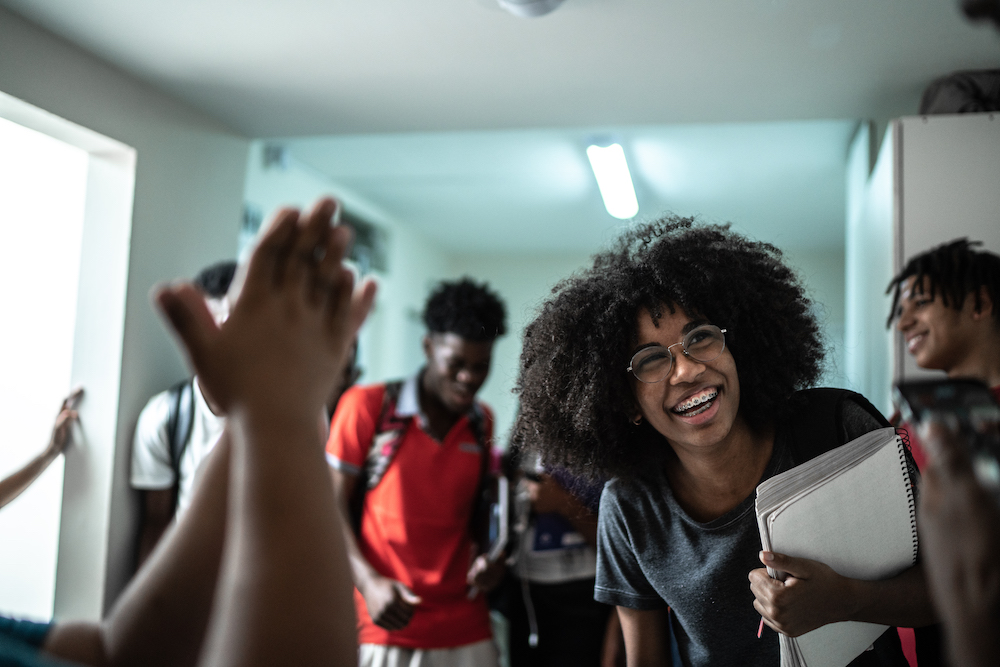Was she struggling with difficult classes? No. In fact, Jen’s aptitude for math was so strong, she had been recruited as an engineering prospect. In her first year, her engineering classes were filled with faces of other women. But as she advanced, there were fewer and fewer women in her classes — until one day, she realized she was the only woman in a large lecture class of men.
Jen began to question if she belonged. Then she started to wonder if she cared enough to persist in engineering. Her quest to understand what she was feeling brought her to my psychology class.
Jen’s experience in engineering shows that human behavior is driven by a few fundamental social needs. Key among them is the need to belong, the need to feel competent and the need for meaning or purpose. These three motivations influence whether people approach or avoid a range of social situations, including academic ones.
What Jen experienced in engineering is called social identity threat — negative emotions aroused in situations where individuals feel their valued identities are marginalized or ignored. It raises doubts about belonging and depletes interest, confidence and motivation. In the long run, social identity threat may lead individuals to withdraw from activities altogether.
I am a social psychologist and the founder of the Institute of Diversity Sciences at the University of Massachusetts, Amherst. For the past two decades, my research has focused on evidence-based solutions: How do we create learning and work environments that fulfill young people’s feeling of belonging, nurture self-confidence and connect their academic and professional pursuits to purpose and meaning? I’m particularly interested in the experiences of girls and women, students of color and working-class college students.
Connecting to the real world
With my team, I have been designing and testing interventions in classrooms, labs and residence halls to see if they protect young people against social identity threat in science, technology, engineering and — or STEM — environments. My work shows that, just as a vaccine can protect and inoculate the body against a virus, features of learning environments can act as “social vaccines” that protect and inoculate the mind against noxious stereotypes.
In one study, we found that when teachers highlight the social relevance of math and connect it to social good, it makes a big difference to students. We followed almost 3,000 adolescents taking eighth grade algebra and tracked their progress for one academic year. Some teachers in our study illustrated abstract concepts using socially meaningful examples. For instance, exponential decay was explained using depreciation of car values or the dilution of medicines in the bloodstream. Others taught such concepts using abstract equations only.
We found students got excited and motivated when they could apply abstract math to socially meaningful problems. They got better grades, reported math was important to them personally and were more active participants in class. We also found that students working in small collaborative peer groups got better end-of-year grades than those working alone. These benefits were especially noticeable for kids of color.
The importance of role models
Another low-cost but powerful “social vaccine” is to introduce young people entering a STEM college program to a fellow student who is a couple of years older and shares their identity.

We conducted a field experiment in which 150 first-year women interested in engineering were randomly assigned a female peer mentor, a male peer mentor or no mentor. Mentoring relationships were limited to mentees’ first year of college. Mentees’ academic experiences were measured each year through college graduation and one year after graduation.
We found that a one-year mentoring relationship with a female peer mentor preserved first-year women students’ emotional well-being, feeling of belonging in engineering, confidence, motivation to keep going and aspiration to pursue postgraduate engineering degrees. Women with male mentors or no mentors showed a decline on most of these metrics. Women who had female peer mentors were significantly more likely to graduate with STEM bachelor’s degrees compared with those who had male peer mentors or no mentors. A follow-up study that is under review shows that these benefits endured four years after the mentoring intervention ended.
A community of peers
First-generation college students are twice as likely to leave college without earning a bachelor’s degree than students whose parents have college degrees. My team and I combined a cocktail of ingredients to create a strong social vaccine to protect this group of young people. Participants were selected from three incoming classes of first-year students at the University of Massachusetts who were interested in biology. All were working-class, and the majority were students of color.
Eligible students were invited to apply to a living-learning community. From the applicant pool, we randomly selected 86 students to become “BioPioneers,” while the remaining 63 students comprised our no-intervention control group.
BioPioneer participants lived together in the same residential college. They took introductory biology and a seminar as a group. Participants in the no-intervention group took introductory biology in a large lecture class with the general student body. The same instructor taught both classes — the course content, teaching style, assignments and grading system were identical for BioPioneers and the no-intervention group.
We brokered authentic relationships between BioPioneers and faculty instructors and academic advisers. We also provided BioPioneers access to student mentors two years ahead of them in the same major.
Results showed that BioPioneers students developed a stronger sense of belonging in biology than students in the no-intervention group. They were more confident about their science ability, less anxious and more motivated to persist. They also received better grades in biology than the no-intervention group.
One year after the program ended, 85% of BioPioneers participants remained biological science majors compared with 66% of students in the no-intervention group. We also compared BioPioneers with a group of 94 honors students, mostly from middle-class and upper-middle-class families, who were in a different living-learning community. We found BioPioneers closed the achievement gap between first-generation students and honors students in terms of belonging, confidence and retention in biology majors. We are currently preparing to submit our findings to a peer-reviewed journal.

I’ve begun to see a pattern in 25 years of research. When educators connect science and engineering to social good, build relationships and create communities that intentionally draw in people who are usually invisible, we automatically attract and advance the talents of people from diverse backgrounds and perspectives.
In my view, not only is this the right thing to do morally, but research shows that diverse viewpoints invigorate problem-solving, reduce the impact of personal biases and promote higher-impact scientific discoveries.![]()







